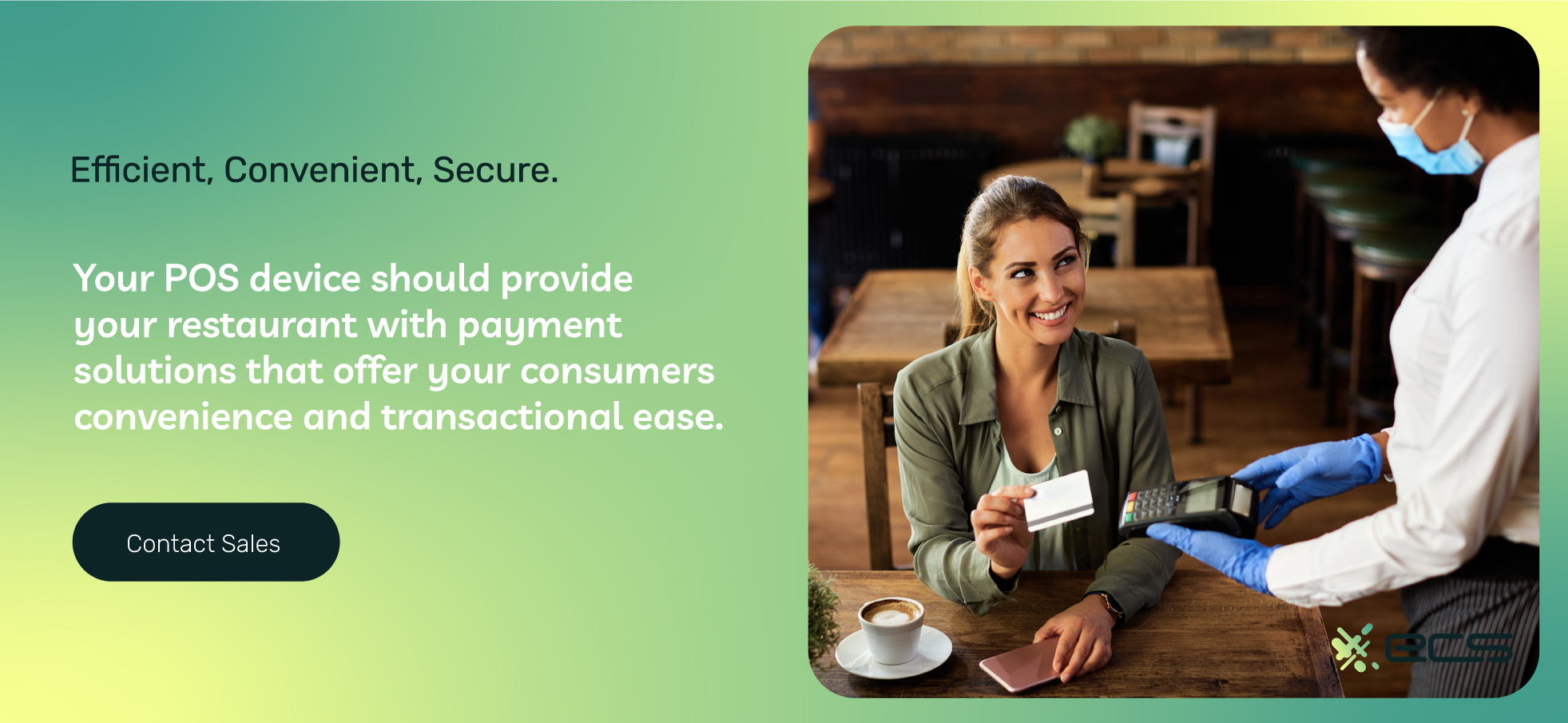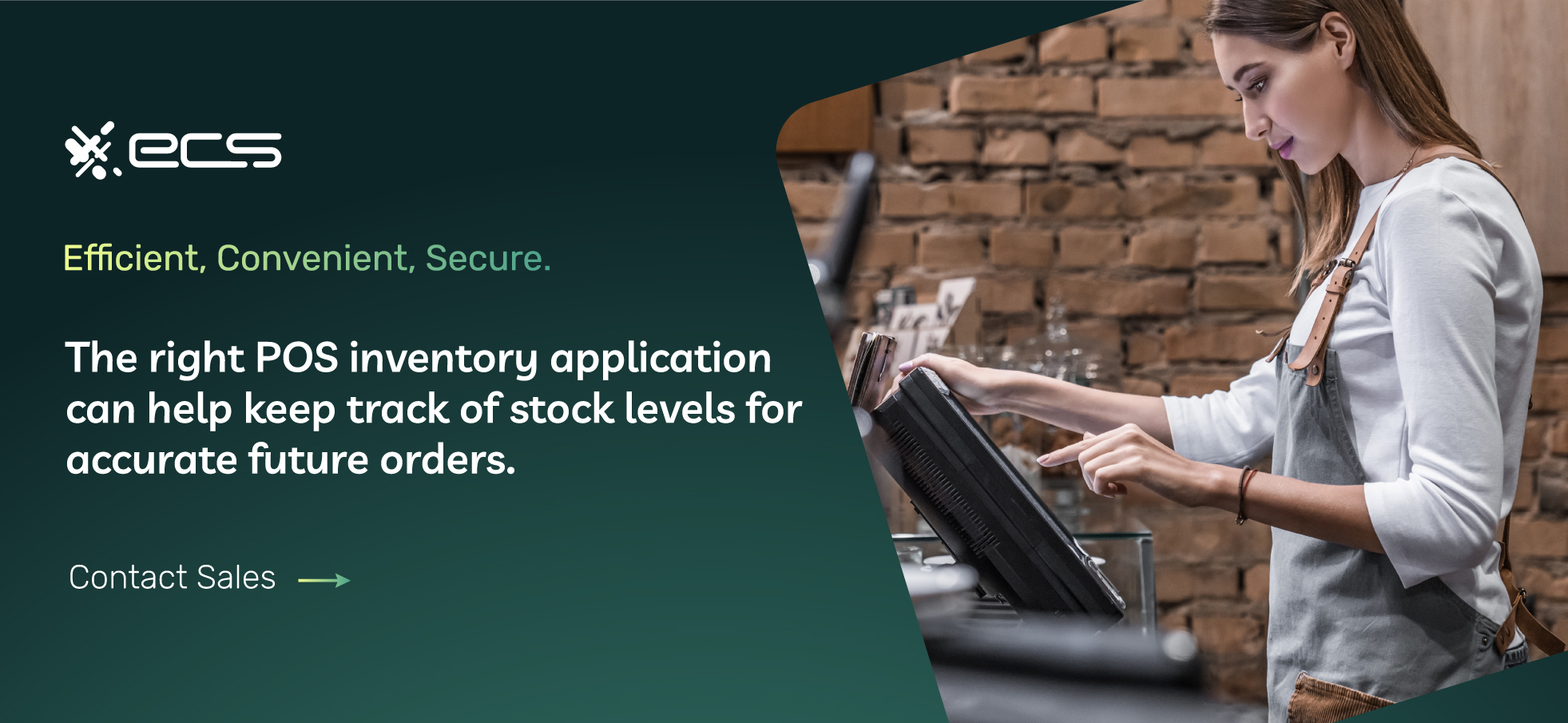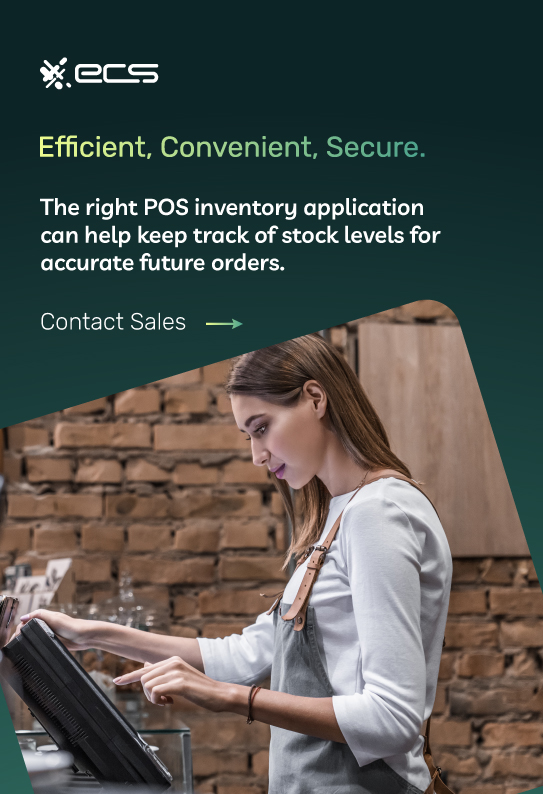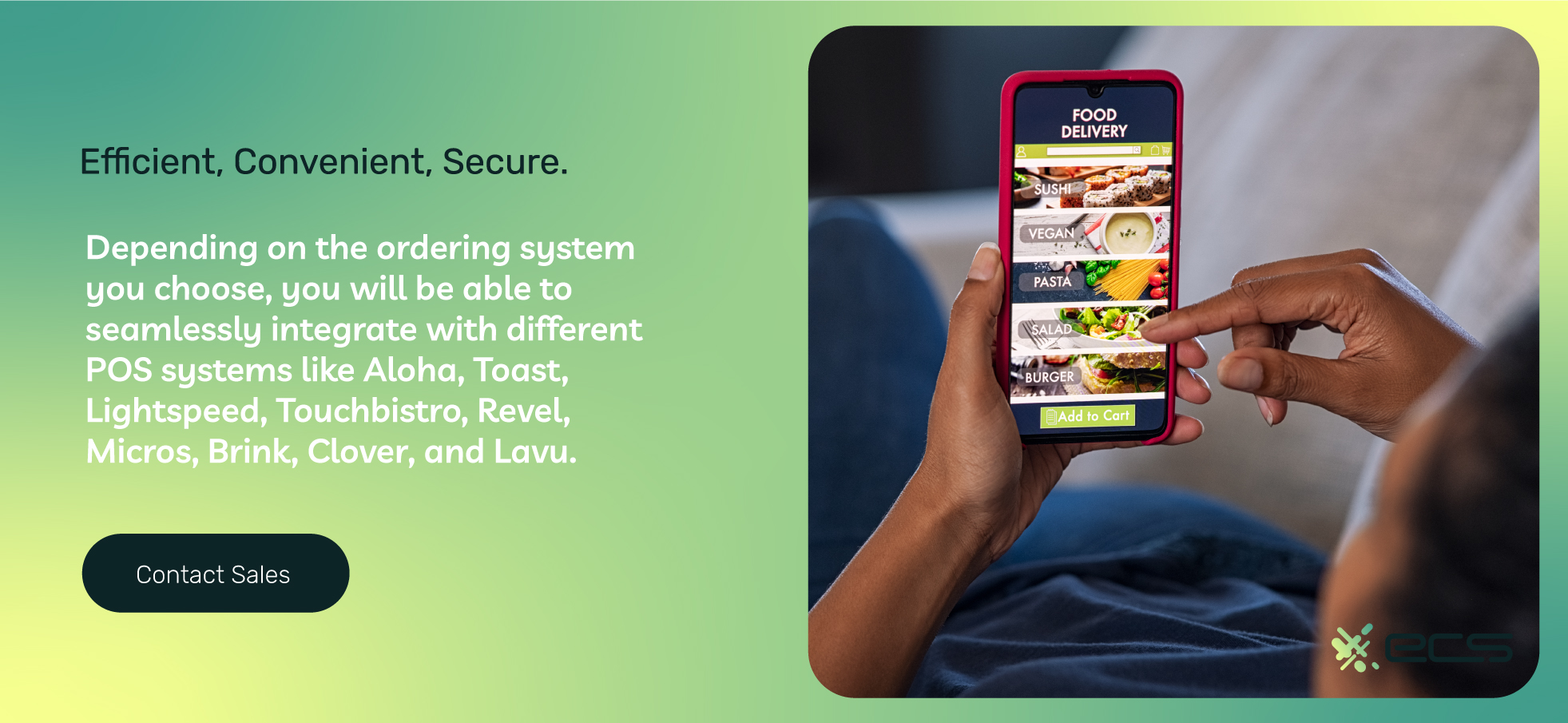Mouthwatering and memorable food is where the dream of a restaurateur or food truck owner starts. However, successfully operating a business in the food industry requires so much more than just an efficient kitchen. They also need robust restaurant payment software with flexible payment options.
To flawlessly flourish in the food dream, a restaurant must be efficient in managing the kitchen’s production, staff, inventory, sales, orders, marketing, accounting, and customers.
Efficiency in every aspect of the business is essential. Choosing the right operating system will allow a restaurant to optimize efficiency, offer easy online ordering, and maintain memorable experiences, which will improve guest satisfaction and ultimately increase revenue.
Covid’s Impact on Changing The Restaurant Industry
The Coronavirus pandemic has, without a doubt, impacted all business markets.
The restaurant industry, however, was forced to make some drastic changes to survive. The public grew fearful of meals being made by someone else and being surrounded by others as they ate.
Social distancing posed many challenges for restaurants. Fortunately, since the genesis of Covid-19, we have evolved and learned more about the virus and how to better safeguard ourselves, treat the sick, and limit exposure.
However, in the trying times, the industry had to overcome and adapt to grow with the current climate and continue to rise above the unforeseen circumstances.
Restaurants that have adopted new business practices to operate in this new terrain will see future success and their doors will remain open.
Restaurants that will thrive in today’s changing world will need to be focused on a positive customer experience, and encourage the safety of their guests.
To create a positive experience with seamless business functionality, the right software to run your restaurant is crucial.
The right technology will have a user-friendly interface and provide the restaurant with seamless features that offer flexible electronic payment options and efficiency in their front-of-house and back-of-house roles including managing customers, inventory, sales, employees, orders, and marketing campaigns.
The right system will also allow a restaurant to offer online ordering, takeout, and delivery.
POS Software Functions to Set Your Restaurant Up for Success
1. User-friendly Interface
Simplicity and ease are crucial when it comes to the right interface for your POS device. A complicated and hard-to-handle system can make it difficult for employees to learn and operate.
In return, this may cause mixed-up orders, longer wait times, a frustrated staff, and therefore an unhappy and unimpressed customer.
An efficient system will save your business a load of time, money, and headaches.

2. Flexible Electronic Payment Processing Options
Your POS device should provide your restaurant with payment solutions that offer your consumers convenience and transactional ease. Guests should be able to use their go-to method of payment to take care of the bill.
Modern POS devices offer capabilities for card payments to be processed in person, online, or over the phone.
Your POS device’s hardware should be able to swipe, dip, key in, or tap the card to receive its information. However contactless payments are quickly becoming one of the most used forms of payment.
Customers should be able to pay their bills with a QR code or by tapping their device with their mobile wallet from Apple Pay or Google Pay.
Electronic payments offer more than ease, they are processed quicker than cash, allow customers to tip more conveniently, resulting in less time for reconciliation and fewer reconciliation errors, reduce theft, and offer higher engagement with customers, as they can be tied to a customer’s online account where loyalties can be generated.
3. Customer Relationship Management
Restaurant owners that integrate a CRM can experience a boost in sales of almost 24%, since 2020 food trucks and ghost kitchens have started to utilize this tool and have experienced an average boost in sales of 31%.
OpenTable
Reduce customer wait times and offer real-time digital updates on table availability through programs like OpenTable.
Managing table reservations should no longer be done on paper books.
Let your guests reserve online, and the right POS system will be equipped to manage your table flow, availability, and waitlists.
This system feature should also include server assignment, where the waitstaff will automatically be assigned to a specific occupied table.
Gift Cards & Loyalty Programs
We value loyal customers. They keep our business going. A loyalty program increases customers’ likelihood of choosing you over your leading competitor for future purchases. It makes those future purchases 90% more frequent and encourages higher spending by up to 60%.
The best loyalty program will entice guests to order again and again, generating increased profit. It will incentivize your customers to spend more, keep them coming back, and they will be rewarded with food, cash, or prize perks.
Gift cards and loyalty programs will automatically generate more foot traffic from customers that otherwise may not have stopped into your store.
Making sure your POS device is equipped to process gift cards and loyalty programs is a must. These simple tools are an excellent way to gather important data, increase profits, and create higher guest appreciation.


4. Inventory Management
To avoid unnecessary overhead, overtime, complicated accounting, or a shortage or overage of supplies, every restaurant POS system should include tools to carefully manage inventory.
The right POS inventory application can help keep track of stock levels for accurate future orders.
Additionally, automated ordering features will help reduce manual tasks and manage inventory orders when your reports reach a pre-set “low”.
5. Sales and Business Analytics
Determining profitability is crucial to make sure you are using your resources to the best of your ability. Successful restaurant operators need to know what part of the operation is making money, and where the most profit is coming from.
Using POS reports and automated features creates ease and convenience in tracking sales trends, customer favorites, and products that could be altered for increased popularity. Accounting applications will also help in back-office labor and make crucial calculations easier to attain.
The optimum restaurant POS system should offer the following business analytics:
- A dashboard that shows profits, dissected from labor, inventory, and sales
- A comparison of sales across different times or between different locations
- Peak performance days and hours
- Sales trends and top-selling item reports
6. Employee Management
Your staff is the face of your company, and making sure your team can effectively do their specific jobs is essential in keeping a composed atmosphere.
In addition to making sure that everyone is on the same page, employee management software makes sure that staff efforts are appropriately rewarded.
Employee management software on your POS device should offer the most efficient way to schedule, automatically send shift reminders, clock in and out, evenly distribute shift hours and card tips, and process payroll.
7. Restaurant Marketing Strategies
Coming up with restaurant marketing ideas can be tough, unless you hire a team of professional marketers, your business may suffer.
Unless you start utilizing software systems that offer a custom restaurant marketing plan to spread the word. This will reduce your costs and give you peace of mind that your restaurant brand is being voiced to the public.
The right software keeps your customer data in one centralized database and offers inclusive marketing materials and campaign implementation and management.
This will increase engagement with a more data-driven and targeted marketing strategy.
From strategy, design, and branding, all the way to implementation, execution, and management, you can create personalized campaigns that will produce enlightened interest and consumer engagement.
You will be able to directly target your audience with personalization on your in-store signage, automated digital marketing texts, emails, and Google campaigns, and social media marketing on Facebook, Instagram, and TikTok ads, all based on customer data and tracking.
8. Order Management
In today’s times, to successfully grow a restaurant, you will need an online ordering solution. A restaurant’s online ordering solution will help streamline tickets from all sources and keeps the kitchen staff moving at an effective pace.
It also allows customers to conveniently pay online and select pick-up or delivery.
Once a customer views your online menu or places an order via your website, or a 3rd party app from their computer or mobile device, the order is automatically sent to your POS device, an electronic ticket is generated for the kitchen, and the guest can take care of payment immediately.
For an online ordering solution to be successful, restaurants must aim to boost efficiency with the use of powerful functionality. Customers who engage in online ordering should be able to easily come back again.
Their experience should be frictionless.
On top of being able to place their order seamlessly, the system should also provide the customer with multiple ways to pay and automatically offer emailed or texted receipts, enrollment in loyalty rewards, and a customer account to send promotions to use for their next visit.

Restaurant Order Systems
Online ordering is easier than ever. 3rd party ordering apps like Grubhub, Doordash, and UberEats have their perks by offering to-go restaurants a way to gain more customers. However, a recent study indicated that customers would prefer to order directly from a restaurant’s app or website instead of through a third party.
These 3rd parties seem convenient, however, their convenience comes with fees in addition to the delivery fee, which as a result can add up.
Online ordering systems can not only combine 3rd party orders into one streamlined display, but will also drive more direct orders, eliminating additional fees for your customers, and bringing in more revenue directly to you for your services.
Depending on the ordering system you choose, you will be able to seamlessly integrate with different POS systems like Aloha, Toast, Lightspeed, Touchbistro, Revel, Micros, Brink, Clover, and Lavu.
Your ordering system integration will also offer custom online branding to feature your business design, logo, colors, and voice to showcase your restaurant’s unique personality.
Your virtual brand will remain consistent with your in-person brand.
Ordering systems, such as the increasingly popular brand Lunchbox, can easily be integrated into your POS device to help you accept and manage online orders, accept online payment, alter menus, maintain customer relations, and create beautiful marketing materials all in a design branded to your business.
These systems offer impeccable online user experience.
They make it easy for your customers to get exactly what they are craving and easily return for more in the future.
Order Consolidation
Restaurant order systems consolidate all third-party, online, and in-house orders to one centralized location on your restaurant’s point-of-sale device.
Consolidating orders from all parties allows your staff to focus on its present customers, rather than spending time trying to locate every order from every app.
This creates a more positive experience and may even help reduce negative reviews for the guest experience.
Every time you update your POS system, your pricing and menus will automatically be updated in real-time for both your online platform and all 3rd party apps.
This means your customers will receive accurate information no matter where they are looking, each and every time.
An efficient ordering system will allow you to maintain control.
You will be able to set the number of orders that can be placed in a given time on all platforms. This allows for comfortable control in your kitchen and takes into account seasonal changes and hours of operation.
Kitchen Displays
A display system is a virtual kitchen ticketing system that increases accuracy and efficiency. It replaces paper tickets and kitchen printers by showcasing everything the kitchen staff needs to know about each customer’s order, including the ingredients needed. Additions and changes to orders reach the kitchen as soon as customers request them.
This information is displayed on a brightly-lit, easy-to-read screen. This feature minimizes waste, prevents chaos, and ensures a highly organized operation and happy clientele.
Ghost Kitchen
Ordering systems also offer the ability to open a Ghost kitchen. Ghost kitchens are professional cooking facilities that are designed for delivery-only meals. These kitchens prepare delicious food but offer no in-house dining room options.
Profitability can be powerful for these new types of business models. The right ordering system will direct the flow of traffic on all applications to view your impressive menu, ready to be delivered.

Artificial Intelligence is Reshaping the Restaurant Industry
While advances in technology have made AI more accessible than ever before, robot chefs are still a little out of reach for the vast majority of restaurants. Instead, artificial intelligence in digital payments and AI payment gateways for restaurant payment software is a more popular tool in restaurants, along with many other industries.
So, how are restaurants using AI exactly if it’s not for preparing and serving their food? Well, AI has really transformed the customer experience when it comes to reservations and orders.
AI phone answering technology can take messages, make reservations, add a guest to the waitlist, or even answer commonly asked questions. Guests can use voice ordering on their smartphones to place restaurant orders on the go.
Kiosks now have facial recognition technology to identify repeat visitors and custom-tailor their experience based on past orders. A customer can also use self-serve kiosks or drive-through kiosks’ voice ordering features to place orders more conversationally rather than using touch screens.
This encompasses all the different ways guests are given the power to control and customize their dining experience through self-service. Customizing menu items while ordering from kiosks. Splitting the check and paying from table side tablets—or even their own devices.
Additionally, AI payment gateways can help facilitate a smoother customer experience for restaurants that offer online ordering. Not only does artificial intelligence in digital payments help merchants process secure and efficient transactions, but restaurant customers can now place orders online in a more personalized way.
AI payment systems can analyze customer and historical transaction data to identify patterns. From there, AI’s machine learning capabilities can make predictions and offer personalized recommendations based on that particular customer’s past behaviors, preferences, and demographics.
Beyond AI in payment systems and self-service, restaurants can also implement AI technology for inventory management, employee scheduling, sales analytics, content creation, and marketing campaigns.
Restaurant Payment Software Takeaways to Go
With the ever-changing world that Covid-19 has created, restaurants had to take a fight-or-flight stance and decide if they were going to adapt to the times or sink in the struggle. With the evolution and adaptation of the latest technology, restaurants can thrive.
New business practices were initiated to focus on safety and customer satisfaction. But streamlining a restaurant’s services will ultimately provide the most efficiency, relief, and the greatest outcome of longevity.
Thus, restaurateurs must demand the best functions software systems have to offer.
To contact sales, click HERE. And to learn more about ECS Restaurant payment software visit us online on our restaurant industry page.
Updated January 2024
